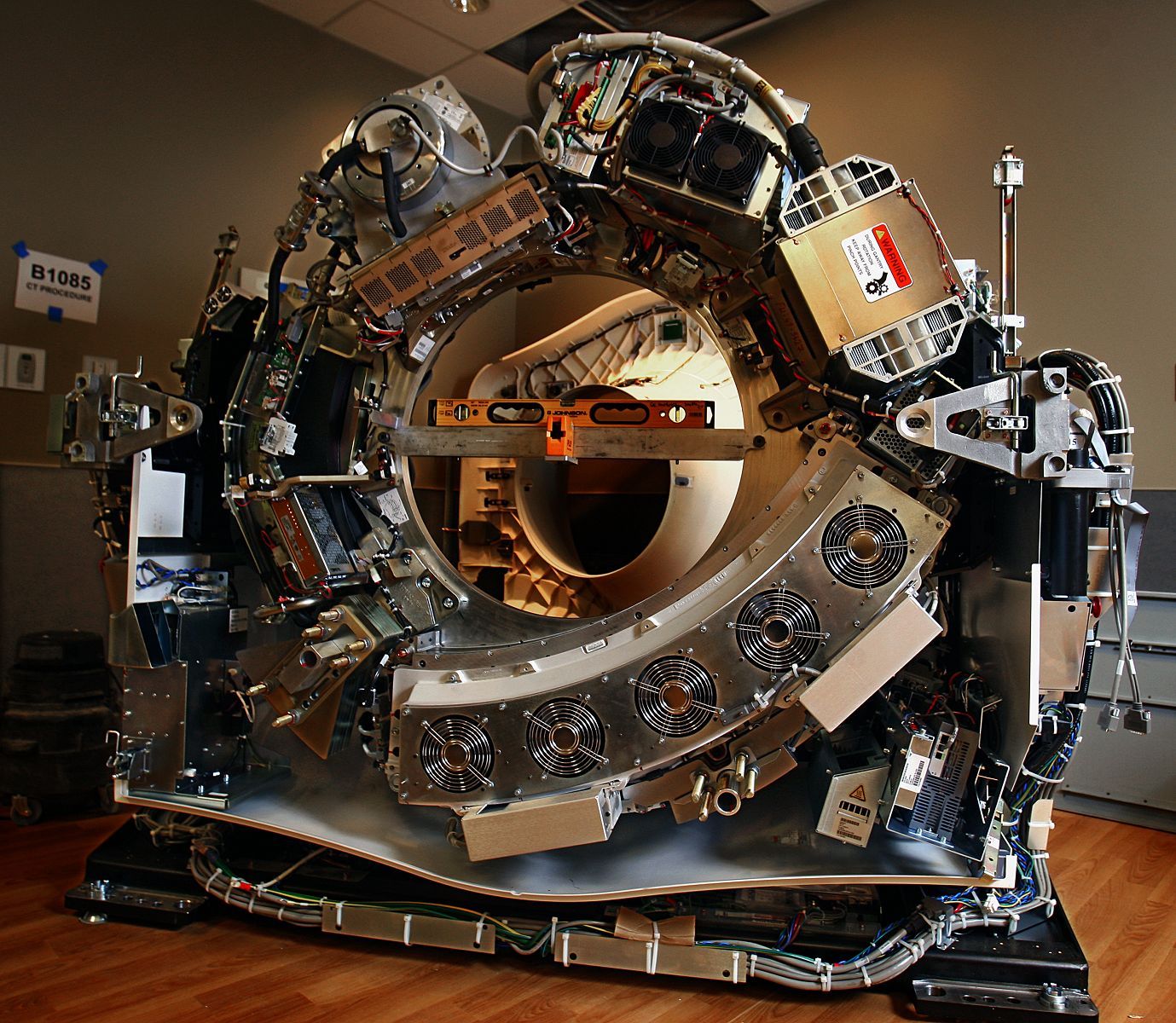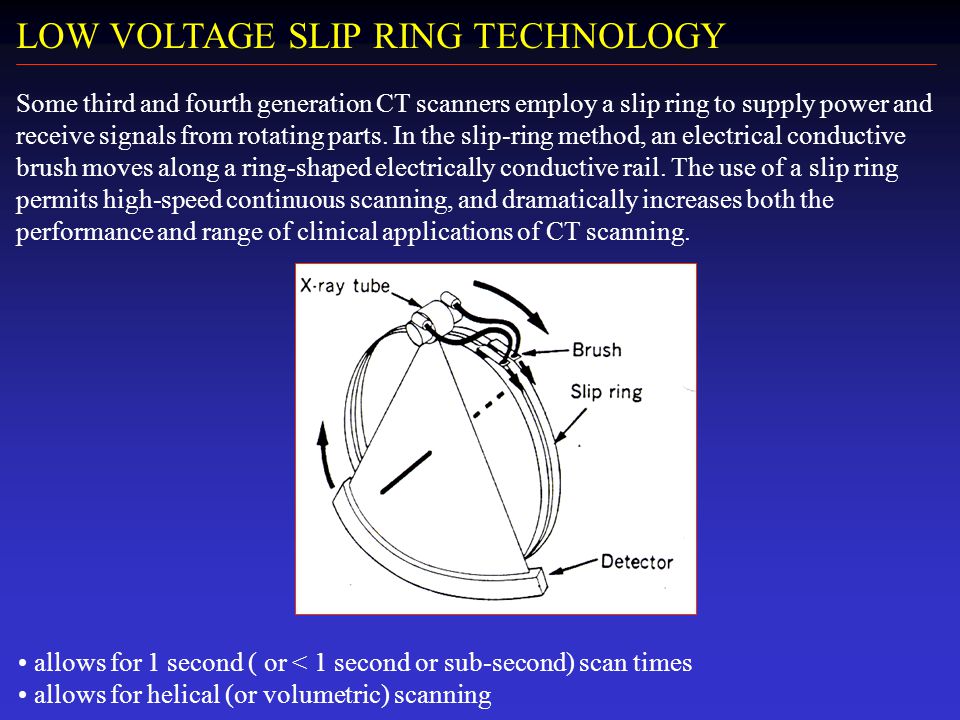A slip ring is an electromechanical device that allows the transmission of power and electrical signals from a stationary to a rotating structure.
Slip ring technology in ct radiology.
Slip rings are electromechanical devices consisting of circular electrical conductive rings and brushes that transmit electrical energy across a moving interface.
Slip ring tecnology 2.
Spiral ct can achieve improved image resolution for a given radiation dose compared to individual slice acquisition.
Large diameter slip rings are ideal for better working of the computed tomography machines.
Continuous rotation of the tube and detectors coupled with continuous movement of the table and patient through the gantry are the basic components of spiral helical ct figure 16 5.
From the perspective of the patient the x ray beam from the ct traces a helical path.
Located inside the gantry the slip ring technology allowed the tube to continue to rotate without the need to rewind.
With helical ct the patient is moved through a rotating x ray beam and detector set.
Slip ring technology enables production of improved images and better diagnostic functionality of the machine.
This is known as spiral or helical ct.
All power and control signals from the stationary parts of the scanner system are communicated to the rotating frame through the slip ring.
Slip ring technology in conventional ct scanning there was a paused between each gantry rotation.
Other ct technologies have been adapted to third and fourth generation scanners including.
With the ever increasing data speed requirements of multi slice machines an alternative method of handling data across the rotating interface is required.
The use of slip ring technology in ct scans has dramatically improved the accuracy and efficacy of this diagnostic scanning process.
Helical spiral image acquisition.
Helical spiral ct image acquisition was a major advance on the earlier stepwise stop and shoot method.
A slip ring can be used in any electromechanical system that requires rotation while transmitting power or signals.
Basics the transmission of power across a large free inner bore is one of the key factors in a rotating system.
Slip ring technology made helical acquisition possible.
Most modern hospitals currently use spiral ct scanners.
It can improve mechanical performance simplify system operation and eliminate damage prone wires dangling from movable joints.
The 1980s saw a significant advancement in technology with the introduction of slip rings which eliminated the need for a high tension cable supply to the x ray tube and detectors and allowed the x ray tube to rotate continuously in one direction around the patient.
Slip rings are electromechanical devices consisting of circular electrical conductive rings and brushes that transmit electrical energy across a moving interface.
In the earliest ct scanners this data transmission task was accomplished with a slip ring i e sliding electrical contacts.









